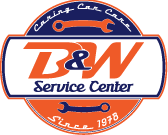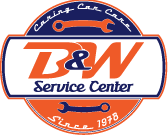Auto Maintenance
-
Belt Replacement
SYMPTOMS
There are a few common things you might notice when your car’s drive belt needs to be replaced:
- Chirping or squealing sound.
- Burning rubber smell.
- Cracks.
Drive belt wear can vary greatly depending on the environment. For instance, most manufacturers recommend belt replacement at least every 60,000 miles. However, in Las Vegas, because of the very dry environment, belts may start cracking as early as 25,000 miles.
Serpentine belt failures are extremely inconvenient because you will lose power steering, water pump circulation, alternator output and air conditioning. This will usually leave you on the side of the road waiting for a tow truck.
Learn more about Timing Belt Replacement
-
Brake Fluid Flush
SYMPTOMS
There are a few common things you might notice when your car’s brake fluid needs to be flushed:
- Mushy brake pedal.
- More pedal effort required to stop.
- You have to pump the pedal.
- Brake fluid is black.
Acid and moisture in a car’s brake fluid can cause a low brake pedal on hard braking, increasing your distance to stop. It also results in costly repairs to the master cylinder, wheel cylinders, calipers and ABS system. By flushing the old brake fluid out of your hydraulic system and replacing it with new brake fluid, you can greatly reduce the need for these repairs.
-
Cooling System Services
SYMPTOMS
There are a few common things you might notice when your car’s cooling system needs to be serviced:
- Temperature gauge reads high.
- Green, red or orange colored leaks.
- Sweet smell.
- Antifreeze is brown colored.
Your cooling system should be flushed and ‘pH balanced’ at least every 30,000 miles or two years (whichever comes first). Flushing your cooling system, and most importantly, pH balancing your anti-freeze, will help reduce the acid level in your cooling system that promotes electrochemical reaction. This reaction causes degradation of the cooling system components. Flushing and pH balancing the coolant will save you money by extending the life of your radiator, heater core, water pump, head gaskets, radiator hoses, heater hoses and freeze plugs.
-
Differential Services
SYMPTOMS
There are a few common things you might notice when your differential needs to be serviced:
- Vibrations that worsen with speed.
- Clunking noises.
- Grinding noises.
- Whirring noises.
Servicing your differential every 50,000 miles will help prevent differential and pinion bearings, axle bearings, ring & pinion gears, spider gears and seals from premature wear. Repairs to the differential can be expensive and can often times be avoided if the differential is serviced regularly.
-
Factory Sheduled Maintenance
WHY IT MATTERS?
Your vehicle’s manufacturer creates detailed maintenance schedules outlining specific operations to be performed on various components and systems. These services are done at different times and mileage intervals to ensure proper operation and to prevent premature wear. The manufacturer also indicates specific services that must be done in order to maintain the factory warranty and extended warranty.
We are equipped with computerized automotive information systems that provide detailed repair and maintenance requirements to help keep you in complete compliance with your manufacturer’s warranty.
Learn more about factory scheduled maintenance services.
-
Fuel Injection Service
SYMPTOMS
There are a few common things you might notice when your fuel injection needs to be serviced:
- Rough idle.
- Hard starting.
- Reduced power.
- Reduced throttle response.
- Reduced gas mileage.
Cleaning your fuel injection system is important because dirt builds up on your engine’s valves, pistons, fuel injectors and throttle body. Dirt can damage your engine and rob you of performance and fuel economy. Flushing your fuel injection system will even help lower emissions.
Here at B&W, we go a step further by de-carbonizing the throttle body and intake tract with our system. This extra service typically results in a much smoother idle and better throttle response. We recommend this service every 30,000 miles.
-
Oil Change
WHY IT MATTERS
Delaying your oil change can seriously affect your engine's health, especially if you drive in severe driving conditions. These include towing trailers, cold weather, driving in dust or dirty air and city driving – short trips, stop-and-go traffic and extended idling.
Changing your oil every 3,000 miles or 3 months, whichever comes first, is generally recommended. However, you should always follow the recommendations in your owner's manual. And remember, even a vehicle that is not running will get oil contamination as a result of accumulated moisture.
At B&W Service Center, with your oil and filter change, we will also inspect and top off:
- Brake fluid
- Transmission fluid
- Coolant fluid
- Power steering fluid
- Transaxle fluid
- Set tire pressure
- Reset oil maintenance light
Learn more about our oil change services.
-
Radiator Hose Replacement
SYMPTOMS
There are a few common things you might notice when your radiator hose needs to be replaced:
- Fluid leaks.
- Sweet smell.
- Corrosion near or on hoses.
- Bulging hoses.
- Hoses that feel brittle.
Like drive belts, radiator hose wear can vary greatly depending on environment. For instance, most manufacturers recommend hose replacement at least every 60,000 miles. However, in Las Vegas, because of the very dry environment, it is not unusual to see hose failures as soon as 3 years or 30,000 miles. Over 70% of all breakdowns on the road are a result of broken belts or hoses.
-
Transmission Repair & Service
SYMPTOMS
There are a few common things you might notice when your transmission needs to be repaired or serviced:
- Delayed engagement.
- Rough shifting.
- Engine revving too high.
- Slow to move when cold.
Unlike a transmission service where only 25% - 30% of the transmission fluid is replaced, we are able to replace 100% of your transmission fluid. We also flush out and clean your torque converter, valve body, transmission cooler and all internal parts to help improve transmission performance and longevity. We recommend this to be performed at least every 30,000 miles.
Learn more about our Transmission Repair and Service
-
Tune Up
SYMPTOMS
There are a number of clues that suggest it’s time for a tune up.
- Hard starting.
- Poor gas mileage.
- Knocking.
- Stalling.
- Loss of power.
- Dieseling.
- Exhaust odor.
- Rough running.
Spark plugs, wires, distributor caps and rotors break down over time due to exposure to moisture, oil, grease and under-the-hood temperatures that can reach as much as 550 to 700 degrees.
Worn spark plugs cause higher voltages forcing the ignition module and coil to produce higher voltages to overcome the resistance. The higher voltage breaks down the spark plug wires’ insulation creating an easier path to ground. This causes the ignition module and coil to produce more voltage generating higher current temperatures within them. This higher than normal resistance weakens transistors and electrical insulation within modules, coils and computers resulting in intermittent and premature failure.
Learn more about our tune up services.
-
Timing Belt Replacement
WHY IT MATTERS?
Most timing belts should be replaced at least every 60,000-90,000 miles. When a timing belt breaks, the car stops. The bad news is, besides the inconvenience of having to be towed, your car may have an interference engine. If so, your engine will suffer internal damage that will result in expensive repairs or even the need for a new engine.
Learn more about our timing belt replacement services.




